Results 11,611 to 11,620 of 12091
Thread: Anandtech News
-
01-05-23, 02:39 PM #11611
Anandtech: CES 2023: IOGEAR Introduces USB-C Docking Solutions and Matrix KVM
IOGEAR has been servicing the computer accessories market with docks and KVMs for more than a couple of decades now. In addition to the generic use-cases, the company creates products that target niche segments with feature sets that are not available in products from other vendors. At CES 2023, IOGEAR is taking the wraps off a number of USB-C docks slated to get introduced over the next couple of quarters.
Docking Solutions
The three new products in this category fall under two categories - the first two utilize Display Link chips along with traditional USB-C Alt Mode support, while the third one uses the Intel Goshen Ridge Thunderbolt controller for 8K support in addition to the usual array of ports found in regular Thunderbolt 4 / USB4 docks. The following table summarizes the essential aspects of the three new products.
The Dock Pro Universal Dual View Docking Station is a premium DisplayLink-based dock capable of driving up to two 4Kp60 displays, with a choice of HDMI or DisplayPort for each.IOGEAR USB-C Docking Solutions @ CES 2023 (Dock Pro Series) Universal Dual View Docking Station Duo USB-C Docking Station USB4 8K Triple View Model Name GUD3C4K2TAA GUD3CDHTAA GUD4C8K3 Upstream Port USB 3.2 Gen 2 Type-C 2x USB 3.2 Gen 2 Type-C (Dual Host Support) USB4 Type-C (40 Gbps) Audio 1x 3.5mm Combo Audio Jack 1x Mic In
1x Speaker Out1x 3.5mm Combo Audio Jack USB-A 2x USB 3.2 Gen 1
1x USB 3.2 Gen 1 (12W charging)2x USB 2.0
2x USB 3.2 Gen 22x USB 3.2 Gen 2
1x USB 3.2 Gen 1USB-C 1x USB 3.2 Gen 2 1x USB 3.2 Gen 2 1x USB 3.2 Gen 2
2x USB4 (40Gbps with DP Alt Mode up to 8Kp30) downstreamNetworking 1x GbE RJ-45 1x GbE RJ-45 1x 2.5 GbE RJ-45 Card Reader - - 1x SDXC UHS-II
1x microSDXC UHS-IIDisplay Outputs 2x HDMI 2.0a
2x Display Port 1.2a
(All via DisplayLink Chipset)
(Max. of 2x 4Kp60 Outputs)2x Display Port 1.2a (4Kp60) (via DisplayLink Chipset)
1x HDMI 1.4a (4Kp30) (via DP Alt Mode)2x HDMI 2.1 (up to 8Kp30)
2x Display Port 2.1 (up to 8Kp30)
(All via DP Alt Mode)Host Power Delivery USB PD 3.0 (up to 100W) Up to 100W per host (total 200W) USB PD 3.0 (up to 96W) Power Supply External 150W @ 20V/7.5A External 230W External 150W @ 20V/7.5A Dimensions 91mm x 70mm x 17mm 219mm x 88mm x 32mm 225mm x 85mm x 18mm Launch Date March 2023 June 2023 March 2023 MSRP $250 $300 $300
The dock also includes host power delivery support, and the distribution of ports is presented above.
The Dock Pro Duo USB-C Docking Station is ostensibly a USB-C dock, but it incorporates features typically found in KVMs. It allows two systems to be simultaneously connected to the dock, and a push button in front to cycle between one of four display modes as show in the picture below.
The push button configures one of the two hosts to the DisplayLink chain (that is behind the two DisplayPort outputs). All the peripheral ports are seen by the host connected to that chain. At the same time, the HDMI port is kept active using the Alt Mode display output from the other host. Hot keys are available to cycle through the display modes to enable easy multi-tasking. This is an innovative combination of docking and KVM that I haven't seen from other vendors yet.
Finally, we have the flagship USB4 / Thunderbolt 4 dock - the Dock Pro USB4 8K Triple View. It incorporates all the bells and whistles one might want from a TB4 dock, including downstream USB4 ports and 8K support.
Surprisingly, the pricing is quite reasonable at $300 - possibly kept that way by avoiding Thunderbolt certification. This product could appeal to a different audience compared to the Plugable TBT4-UDZ despite similar pricing, thanks to the availability of downstream ports. However, the product is slated to ship only towards the end of the quarter.
KVM Solutions
IOGEAR is also announcing the GCMS1922 2-port 4K Dual View DisplayPort Matrix KVMP with USB 3.0 Hub and Audio. Such KVMs with 4Kp60 support have typically been priced upwards of $500. This is no exception with a $530 MSRP. However, for this pricing, IOGEAR is incorporating a number of interesting features. The KVM can operate in either matrix or extension mode, with one computer driving both display outputs in the latter, and each host driving one display in the former. In the matrix mode, the KVM also supports crossover switching via movement of the mouse pointer (in addition to the regular physical button on the KVM and hotkeys). Audio mixing support (i.e, keeping the audio output of a 'disconnected' host also active) is available too, allowing the monitoring of notifications from both computers without having to switch sources.
The KVM provides two USB 3.2 Gen 1 and two USB 2.0 Type-A ports for downstream peripherals in addition to separate audio jacks for the speaker and microphone. It must be noted that the display outputs are HDMI, while the inputs are DisplayPort. The KVM switch is slated to become available later this quarter.
In addition to these upcoming products, IOGEAR is also demonstrating the KeyMander Nexus Gaming KVM and the MECHLITE NANO compact USB / wireless keyboard at the show. These products were introduced into the market last year.
Gallery: CES 2023: IOGEAR Introduces USB-C Docking Solutions and Matrix KVM




More...
-
01-05-23, 02:39 PM #11612
Anandtech: CES 2023: AMD Instinct MI300 Data Center APU Silicon In Hand - 146B Transi
Alongside AMD’s widely expected client product announcements this evening for desktop CPUs, mobile CPUs, and mobile GPUs, AMD’s CEO Dr. Lisa Su also had a surprise up her sleeve for the large crowd gathered for her prime CES keynote: a sneak peak at MI300, AMD’s next-generation data center APU that is currently under development. With silicon literally in hand, the quick teaser laid out the basic specifications of the part, along with reiterating AMD’s intentions of taking leadership in the HPC market.
First unveiled by AMD during their 2022 Financial Analyst Day back in June of 2022, MI300 is AMD’s first shot at building a true data center/HPC-class APU, combining the best of AMD’s CPU and GPU technologies. As was laid out at the time, MI300 would be a disaggregated design, using multiple chiplets built on TSMC’s 5nm process, and using 3D die stacking to place them over a base die, all of which in turn will be paired with on-package HBM memory to maximize AMD’s available memory bandwidth.
AMD for its part is no stranger to combining the abilities of its CPUs and GPUs – one only needs to look at their laptop CPUs/APUs – but to date they’ve never done so on a large scale. AMD’s current best-in-class HPC hardware is to combine the discrete AMD Instinct MI250X (a GPU-only product) with AMD’s EPYC CPUs, which is exactly what’s been done for the Frontier supercomputer and other HPC projects. MI300, in turn, is the next step in the process, bringing the two processor types together on to a single package, and not just wiring them up in an MCM fashion, but going the full chiplet route with TSV stacked dies to enable extremely high bandwidth connections between the various parts.
The key point of tonight’s reveal was to show off the MI300 silicon, which has reached initial production and is now in AMD’s labs for bring-up. AMD had previously promised a 2023 launch for the MI300, and having the silicon back from the fabs and assembled is a strong sign that AMD is on track to make that delivery date.
Along with a chance to see the titanic chip in person (or at least, over a video stream), the brief teaser from Dr. Su also offered a few new tantalizing details about the hardware. At 146 billion transistors, MI300 is the biggest and most complex chip AMD has ever built – and easily so. Though we can only compare it to current chip designs, this is significantly more transistors than either Intel’s 100B transistor Xeon Max GPU (Ponte Vecchio), or NVIDIA’s 80B transistor GH100 GPU. Though in fairness to both, AMD is stuffing both a GPU and a CPU into this part.
The CPU side of the MI300 has been confirmed to use 24 of AMD’s Zen 4 CPU cores, finally giving us a basic idea of what to expect with regards to CPU throughput. Meanwhile the GPU side is (still) using an undisclosed number of CDNA 3 architecture CUs. All of this, in turn, is paired with 128GB of HBM3 memory.
According to AMD, MI300 is comprised of 9 5nm chiplets, sitting on top of 4 6nm chiplets. The 5nm chiplets are undoubtedly the compute logic chipets – i.e. the CPU and GPU chiplets – though a precise breakdown of what’s what is not available. A reasonable guess at this point would be 3 CPU chiplets (8 Zen 4 cores each) paired with possibly 6 GPU chiplets; though there's still some cache chiplets unaccounted for. Meanwhile, taking AMD’s “on top of” statement literally, the 6nm chiplets would then be the base dies all of this sits on top of. Based on AMD’s renders, it looks like there’s 8 HBM3 memory stacks in play, which implies around 5TB/second of memory bandwidth, if not more.
With regards to performance expectations, AMD isn’t saying anything new at this time. Previous claims were for a >5x improvement in AI performance-per-watt versus the MI250X, and an overall >8x improvement in AI training performance, and this is still what AMD is claiming as of CES.
The key advantage of AMD’s design, besides the operational simplicity of putting CPU cores and GPU cores on the same design, is that it will allow both processor types to share a high-speed, low-latency unified memory space. This would make it fast and easy to pass data between the CPU and GPU cores, letting each handle the aspects of computing that they do best. As well, it would significantly simplify HPC programming at a socket level by giving both processor types direct access to the same memory pool – not just a unified virtual memory space with copies to hide the physical differences, but a truly shared and physically unified memory space.
When it launches in the later half of 2023, AMD’s MI300 is expected to be going up against a few competing products. The most notable of which is likely NVIDIA’s Grace Hopper superchip, which combines an NVIDIA Armv9 Grace CPU with a Hopper GPU. NVIDIA has not gone for quite the same level of integration as AMD is, which arguably makes MI300 a more ambitious project, though NVIDIA’s decision to maintain a split memory pool is not without merit (e.g. capacity). Meanwhile, AMD’[s schedule would have them coming in well ahead of arch rival Intel’s Falcon Shores XPU, which isn’t due until 2024.
Expect to hear a great deal more from AMD about Instinct MI300 in the coming months, as the company will be eager to show off their most ambitious processor to date.
More...
-
01-06-23, 08:23 AM #11613
Anandtech: A Lighter Touch: Exploring CPU Power Scaling On Core i9-13900K and Ryzen 9
One of the biggest running gags on social media and Reddit is how hot and power hungry CPUs have become over the years. Whereas at one time flagship x86 CPUs didn't even require a heatsink, they can now saturate whole radiators. Thankfully, it's not quite to the levels of a nuclear reactor, as the memes go – but as the kids say these days, it's also not a nothingburger. Designing for higher TDPs and greater power consumption has allowed chipmakers to keep pushing the envelope in terms of performance – something that's no easy feat in a post-Dennard world – but it's certainly created some new headaches regarding power consumption and heat in the process. Something that, for better or worse, the latest flagship chips from both AMD and Intel exemplify.
But despite these general trends, this doesn't mean that a high performance desktop CPU also needs to be a power hog. In our review of AMD's Ryzen 9 7950X, our testing showed that even capped at a these days pedestrian 65 Watts, the 7950X could deliver a significant amount of performance at less than half its normal power consumption.
If you'll pardon the pun, power efficiency has become a hot talking point these days, as enthusiasts look to save on their energy bills (especially in Europe) while still enjoying fast CPU performance, looking for other ways to take advantage of the full silicon capabilities of AMD's Raphael and Intel's Raptor Lake-S platforms besides stuffing the chips with as many joules as possible. All the while, the small form factor market remains a steadfast outpost for high efficiency chips, where cooler chips are critical for building smaller and more compact systems that can forego the need for large cooling systems.
All of this is to say that while it's great to see the envelope pushed in terms of peak performance, the typical focus on how an unlocked chip scales when overclocking (pushing CPU frequency and CPU VCore voltages) is just one way to look at overall CPU performance. So today we are going to go the other way, and to take a look at overall energy efficiency for users – to see what happens when we aim for the sweet spot on the voltage/frequency curve. To that end, today we're investigating how the Intel Core i9-13900K and AMD Ryzen 9 7950X perform at different power levels, and to see what kind of benefits power scaling can provide compared to stock settings.
More...
-
01-06-23, 08:23 AM #11614
Anandtech: CES 2023: Akasa Introduces Fanless Cases for Wall Street Canyon NUCs
Akasa is one of the very few vendors to carry a portfolio of passively-cooled chassis solutions for the Intel NUCs. We had reviewed their Turing solution with the Bean Cayon NUC and the Newton TN with the Tiger Canyon NUC, and come away impressed with the performance of both cases. At CES 2023, the company is upgrading their portfolio of fanless NUC cases to support the mainstream NUC Pro using the 12th-Gen Core processors - the Wall Street Canyon.
Turing WS
The Turing WS builds upon the original Turing chassis to accommodate the updated I/Os of the Wall Street Canyon NUC.
The 2.7L chassis can be oriented either horizontally or vertically, and retains the ability to install a 2.5" SATA drive. Improvements over the previous generations include the inclusion of an updated thermal solution for the M.2 SSD.
The Turing WS retains all the I/Os of the regular Wall Street Canyon kits and also includes antenna holes for those requiring Wi-Fi connection in the system. The company does offer suggested complementary additions to the build for that purpose - a tri-band Wi-Fi antenna and corresponding pigtails. We would like to see these getting included by default for the DIY versions of the Turing WS that get sold in retail.
Newton WS
The Newton WS is a minor update to the Newton TN that we reviewed last year.
The key change is the removal of the serial cable and corresponding rear I/O cut-out. In fact, Akasa indicates that the Newton TN can also be used with the Wall Street Canyon for consumers requiring the serial I/O support.
The 1.9L volume, additional USB ports in the front I/O (that are not available in the regular Wall Street Canyon kits), and VESA mounting support are all retained in the Newton WS.
Plato WS
The Plato WS is a slim chassis (39mm in height) that builds upon user feedback for the previous Plato cases. The key update over the Plato TN is the integration of support for the front panel audio jack.
The Plato WS carries over all the other attractive aspects of the product family - VESA and rack mounting support, 2.5" drive installation support, serial port in the rear I/O, and additional USB 2.0 ports in the front panel.
In addition to the above three SKUs, Akasa also recently launched the Pascal TN, a passively-cooled IP65-rated case for the Tiger Canyon and Wall Street Canyon NUCs, making it suitable for outdoor installations.
Akasa's main competition comes from fanless system vendors like OnLogic and Cirrus7 who prefer to sell pre-built systems with higher margins. In the DIY space, we have offerings like the HDPLEX H1 V3 and HDPLEX H1 TODD which unfortunately do not have wide distribution channels like Akasa's products - as a result of lower volumes, the pricing is also a bit on the higher end. For Wall Street Canyon, Tranquil is also offering a DIY case in addition to their usual pre-built offerings. It remains to be seen whether the company remains committed to the DIY space.
Passively-cooled cases usually have a significant price premium that regular consumers usually don't want to pay. Vendors like Akasa are bringing about a change in this category by offering reasonably-priced, yet compelling products via e-tailers. Simultaneous focus on industrial deployments and OEM contracts as well as consumer retail has proved successful for Akasa, as evidenced by their continued commitment to thermal solutions for different NUC generations.
Gallery: CES 2023: Akasa Introduces Fanless Cases for Wall Street Canyon NUCs





Source: Akasa, FanlessTech
More...
-
01-08-23, 08:01 AM #11615
Anandtech: CES 2023: QNAP Brings Hybrid Processors and E1.S SSD Support to the NAS Ma
Over the last few years, the developments in the commercial off-the-shelf (COTS) network-attached storage (NAS) market have mostly been on the software front - bringing in more business-oriented value additions and better support for containers and virtual machines. We have had hardware updates in terms of processor choices and inclusion of M.2 SSD slots (primarily for SSD caching), but they have not been revolutionary changes.
At CES 2023, QNAP revealed plans for two different NAS units - the all-flash TBS-574X (based on the Intel Alder Lake-P platform), and the ML-focused TS-AI642 (based on the Rockchip RK3588 app processor). While QNAP only provided a teaser of the capabilities, there are a couple of points worth talking about to get an idea of where the COTS NAS market is headed towards in the near future.
Hybrid Processors
Network-Attached storage units have typically been based on either server platforms in the SMB / SME space or single-board computer (SBC) platforms in the home consumer / SOHO space. Traditionally, both platforms have eschewed big.LITTLE / hybrid processors for a variety of reasons. In the x86 space, we saw hybrid processors entering the mainstream market recently with Intel's Alder Lake family. In the ARM world, big.LITTLE has been around for a relatively longer time. However, server workloads are typically unsuitable for that type of architecture. Without a credible use-case for such processors, it is also unlikely that servers will go that route. However, SBCs are a different case, and we have seen a number of application processors adopting the big.LITTLE strategy getting used in that market segment.
Both the all-flash TBS-574X and the AI NAS TS-AI642 are based on hybrid processors. The TBS-574X uses the Intel Core i3-1220P (Alder Lake-P) in a 2P + 8E configuration. The TS-AI642 is based on the Rockchip RK3588 [ PDF ], with 4x Cortex-A76 and 4x Cortex-A55 fabricated in Samsung's 8LPP process.
QNAP is no stranger to marketing Atom-based NAS units with 2.5 GbE support - their recent Jasper Lake-based tower NAS line-up has proved extremely popular for SOHO / SMB use-cases. The Gracemont cores in the Core i3-1220P are going to be a step-up in performance, and the addition of two performance cores can easily help with user experience related to features more amenable for use in their Core-based units.
NAS units have become powerful enough to move above and beyond their basic file serving / backup target functionality. The QTS applications curated by QNAP help in providing well-integrated value additions. Some of the most popular ones enable container support as well as the ability to run virtual machines. As the range of workloads run on the NAS simultaneously start to vary, hybrid processors can pitch in to improve performance while maintaining power efficiency.
On the AI NAS front, the Rockchip RK3588 has processor cores powerful enough for a multi-bay NAS. However, QNAP is putting more focus on the neural network accelerator blocks (the SoC has 6 TOPS of NN inference performance), allowing the NAS to be marketed to heavy users of their surveillance and 'AI' apps such as QVR Face (for face recognition in surveillance videos), QVR Smart Search (for event searching in surveillance videos), and QuMagie (for easily indexed photo albums with 'AI' functionality).
E1.S Hot-Swappable SSDs
QNAP's first NASbook - an all-flash NAS using M.2 SSDs - was introduced into the market last year. The TBS-464 remains a unique product in the market, but goes against the NAS concept of hot-swappable drives.
At the time of its introduction, there was no industry standard for hot-swappable NVMe flash drives suitable for the NASbook's form-factor. U.2 and U.3 drive slots with hot-swapping capabilities did exist in rackmount units meant for enterprises and datacenters. So, QNAP's NASbook was launched without hot-swapping support. Meanwhile, the industry was consolidating towards E1.S and E1.L as standard form-factors for hot-swappable NVMe storage.
QNAP's 2023 NASbook - the TBS-574X - will be the first QNAP NAS to support E1.S hot-swappable SSDs (up to 15mm in thickness). In order to increase drive compatibility, QNAP will also be bundling M.2 adapters attached to each drive bay. This will allow end-users to use M.2 SSDs in the NASbook while market availability of E1.S SSDs expands.
(L to R) E1.S 5.9mm (courtesy of SMART Modular Systems); E1.S Symmetric Enclosure (courtesy of Intel); E1.S (courtesy of KIOXIA)
Specifications Summary
The TBS-574X uses the Intel Core i3-1220P (2P + 8E - 10C/12T) and includes 16GB of DDR4 RAM. Memory expansion support is not clear as yet (It is likely that these are DDR4 SO-DIMMs). There are five drive bays, and the NAS seems to be running QTS based on QNAP's model naming). The NASbook also sports 2.5 GbE and 10 GbE ports, two USB4 ports (likely Thunderbolt 4 sans certification, as QNAP claims 40 Gbps support, and ADL-P supports it natively), and 4K HDMI output. The NASbook also supports video transcoding with the integrated GPU in the Core i3-1220P. QNAP is primarily targeting collaborative video editing use-cases with the TBS-574X.
The TS-AI642 uses the RockChip RK3588 (4x CA-76 + 4x CA-55) app processor. The RAM specifications were not provided - SoC specs indicate LPDDR4, but we have reached out to QNAP for the exact amount . There are six drive bays. This is again interesting, since the SoC natively offers only up to 3 SATA ports. So, QNAP is either using a port multiplier or a separate SATA controller connected to the PCIe lanes for this purpose. The SoC's native network support is restricted to dual GbE ports, but QNAP is including 2.5 GbE as well as a PCIe Gen 3 slot for 10 GbE expansion. These are also bound to take up the limited number of PCIe lanes in the processor (which is 4x PCIe 3.0, configurable as 1 x4, or 2 x2, or 4 x1). Overall, the hardware is quite interesting in terms of how QNAP will be able to manage performance expectations with the SoC's capabilities. With a focus on surveillance deployments and cloud storage integration, the performance may be good enough even with port multipliers.
Concluding Remarks
Overall, QNAP's teaser of their two upcoming desktop NAS products has provided us with insights into where the NAS market for SOHOs / SMBs is headed in the near future. QNAP has never shied away from exploring new hardware options, unlike Synology, QSAN, Terramaster, and the like. While we are very bullish on E1.S support and hybrid processors in desktop NAS units, the appeal of the RockChip-based AI NAS may depend heavily on its price to capabilities / performance aspect.
More...
-
01-09-23, 10:09 AM #11616
Anandtech: Micron Launches 9400 NVMe Series: U.3 SSDs for Data Center Workloads
Micron is taking the wraps off their latest data center SSD offering today. The 9400 NVMe Series builds upon Micron's success with their third-generation 9300 series introduced back in Q2 2019. The 9300 series had adopted the U.2 form-factor with a PCIe 3.0 x4 interface, and utilized their 64L 3D TLC NAND. With a maximum capacity of 15.36 TB, the drive matched the highest-capacity HDDs on the storage amount front at that time (obviously with much higher performance numbers). In the past couple of years, the data center has moved towards PCIe 4.0 and U.3 in a bid to keep up with performance requirements and unify NVMe, SAS, and SATA support. Keeping these in mind, Micron is releasing the 9400 NVMe series of U.3 SSDs with a PCIe 4.0 x4 interface using their now-mature 176L 3D TLC NAND. Increased capacity per die is also now enabling Micron to present 2.5" U.3 drives with capacities up to 30.72 TB, effectively doubling capacity per rack over the previous generation.
Similar to the 9300 NVMe series, the 9400 NVMe series is also optimized for data-intensive workloads and comes in two versions - the 9400 PRO and 9400 MAX. The Micron 9400 PRO is optimized for read-intensive workloads (1 DWPD), while the Micron 9400 MAX is meant for mixed use (3 DWPD). The maximum capacity points are 30.72 TB and 25.60 TB respectively. The specifications of the two drive families are summarized in the table below.
The 9400 NVMe SSD series is already in volume production for AI / ML and other HPC workloads. The move to a faster interface, as well as higher-performance NAND enables a 77% improvement in random IOPS per watt over the previous generation. Micron is also claiming better all round performance across a variety of workloads compared to enterprise SSDs from competitors.Micron 9400 NVMe Enterprise SSDs 9400 PRO 9400 MAX Form Factor U.3 2.5" 15mm Interface PCIe 4.0 NVMe 1.4 Capacities 7.68TB
15.36TB
30.726.4TB
12.8TB
25.6TBNAND Micron 176L 3D TLC Sequential Read 7000 MBps Sequential Write 7000 MBps Random Read (4 KB) 1.6M IOPS (7.68TB and 15.36TB)
1.5M IOPS (30.72TB)1.6M IOPS (6.4TB and 12.8TB)
1.5M IOPS (25.6TB)Random Write (4 KB) 300K IOPS 600K IOPS (6.4TB and 12.8TB)
550K IOPS (25.6TB)Power Operating 14-21 W (7.68TB)
16-25W (15.36TB)
17-25W (30.72TB)14-21 W (6.40TB)
16-24W (12.8TB)
17-25W (25.6TB)Idle ? W ? W Write Endurance 1 DWPD 3 DWPD Warranty 5 years
The Micron 9400 PRO goes against the Solidigm D7-5520, Samsung PM1733, and the Kioxia CM6-R. The Solidigm D7-5520 is handicapped by lower capacity points (due to its use of 144L TLC), resulting in lower performance against the 9400 PRO in all but the sequential reads numbers. The Samsung PM1733 also tops out at 15.36TB with performance numbers similar to that of the Solidigm model. The Kioxia CM6-R is the only other U.3 SSD with capacities up to 30.72TB. However, its performance numbers across all corners lags well behind the 9400 PRO's.
The Micron 9400 MAX has competition from the Solidigm D7-P5620, Samsung PM1735, and the Kioxia CM6-V. Except for sequential reads, the Solidigm D7-P5620 lags the 9400 MAX in performance as well as capacity points. The PM1735 is only available in an HHHL AIC form-factor and uses PCIe 4.0 x8 interface. So, despite its 8 GBps sequential read performance, it can't be deployed in a manner similar to that of the 9400 MAX. The Kioxia CM6-V tops out at 12.8TB and has lower performance numbers compared to the 9400 MAX.
Despite not being the first to launch 32TB-class SSDs into the data center market, Micron has ensured that their eventual offering provides top-tier performance across a variety of workloads compared to the competition. We hope to present some hands-on performance numbers for the SSD in the coming weeks.
More...
-
01-09-23, 10:09 AM #11617
Anandtech: The AMD Ryzen 9 7900, Ryzen 7 7700, and Ryzen 5 5 7600 Review: Zen 4 Effic
In Q3 of last year, AMD released the first CPUs based on its highly anticipated Zen 4 architecture. Not only did their Ryzen 7000 parts raise the bar in terms of performance compared with the previous Ryzen 5000 series, but it also gave birth to AMD's latest platform, AM5. Some of the most significant benefits of Zen 4 and the AM5 platform include support for PCIe 5.0, DDR5 memory, and access to the latest and greatest of what's available in controller sets.
While the competition at the higher end of the x86 processor market is a metaphorical firefight with heavy weaponry, AMD has struggled to offer users on tighter budgets anything to sink their teeth into. It's clear Zen 4 is a powerful and highly efficient architecture, but with the added cost of DDR5, finding all of the components to fit under tighter budget constraints with AM5 isn't as easy as it once was on AM4.
AMD has launched three new processors designed to offer users on a budget something to get their money's worth, with performance that make them favorable for users looking for Zen 4 hardware but without the hefty financial outlay. The AMD Ryzen 9 7900, Ryzen 7 7700, and Ryzen 5 7600 processors all feature the Zen 4 microarchitecture and come with a TDP of just 65 W, which makes them viable for all kinds of users, such as enthusiasts looking for a more affordable entry-point onto the AM5 platform.
Of particular interest is AMD's new budget offering for the Ryzen 7000 series: the Ryzen 5 7600, which offers six cores/twelve threads for entry-level builders looking to build a system with all of the features of AM5 and the Ryzen 7000 family, but at a much more affordable price point. We are looking at all three of AMD's new Ryzen 7000 65 W TDP processors to see how they stack up against the competition, to see if AMD's lower-powered, lower-priced non-X variants can offer anything in the way of value for consumers. We also aim to see if AMD's 65 W TDP implementation can shine on TSMC's 5 nm node process with performance per watt efficiency that AMD claims is the best on the market.
More...
-
01-12-23, 05:33 PM #11618
Anandtech: Intel Unveils Core i9-13900KS: Raptor Lake Spreads Its Wings to 6.0 GHz
Initially mentioned during their Innovation 2022 opening keynote by Intel CEO Pat Gelsinger, Intel has unveiled its highly anticipated 6 GHz out-of-the-box processor, the Core i9-13900KS. The Core i9-13900KS has 24-cores (8P+16E) within its hybrid architecture design of performance and efficiency cores, with the exact fundamental specifications of the Core i9-13900K, but with an impressive P-core turbo of up to 6 GHz.
Based on Intel's Raptor Lake-S desktop series, Intel claims that the Core i9-13900KS is the first desktop processor to reach 6 GHz out of the box without overclocking. Available from today, the Core i9-13900KS has a slightly higher base TDP of 150 W (versus 125 on the 13900K), 36 MB of Intel's L3 smart cache, and is pre-binned through a unique selection process to ensure the Core i9-13900KS's special edition status for their highest level of frequency of 6 GHz in a desktop chip out of the box, without the need to overclock manually.
More...
-
01-17-23, 04:48 PM #11619
Anandtech: TSMC's 3nm Journey: Slow Ramp, Huge Investments, Big Future
Last week, TSMC issued their Q4 and full-year 2022 earnings reports for the company. Besides confirming that TSMC was closing out a very busy, very profitable year for the world's top chip fab – booking almost $34 billion in net income for the year – the end-of-year report from the company has also given us a fresh update on the state of TSMC's various fab projects.
The big news coming out of TSMC for Q4'22 is that TSMC has initiated high volume manufacturing of chips on its N3 (3nm-class) fabrication technology. The ramp of this node will be rather slow initially due to high design costs and the complexities of the first N3B implementation of the node, so the world's largest foundry does not expect it to be a significant contributor to its revenue in 2023. Yet, the firm will invest tens of billions of dollars in expanding its N3-capable manufacturing capacity as eventually N3 is expected to become a popular long-lasting family of production nodes for TSMC.
Slow Ramp Initially
"Our N3 has successfully entered volume production in late fourth quarter last year as planned, with good yield," said C. C. Wei, chief executive of TSMC. "We expect a smooth ramp in 2023 driven by both HPC and smartphone applications. As our customers' demand for N3 exceeds our ability to supply, we expect the N3 to be fully utilized in 2023."
Keeping in mind that TSMC's capital expenditures in 2021 and 2022 were focused mostly on expanding its N5 (5nm-class) manufacturing capacities, it is not surprising that the company's N3-capable capacity is modest. Meanwhile, TSMC does not expect N3 to account for any sizable share of its revenue before Q3.
In fact, the No. 1 foundry expects N3 nodes (which include both baseline N3 and relaxed N3E that is set to enter HVM in the second half of 2023) to account for maybe 4% - 6% of the company's wafer revenue in 2023. And yet this would exceed the contribution of N5 in its first two quarters of HVM in 2020 (which was about $3.5 billion).
"We expect [sizable N3 revenue contribution] to start in third quarter 2023 and N3 will contribute mid-single-digit percentage of our total wafer revenue in 2023," said Wei. "We expect the N3 revenue in 2023 to be higher than N5 revenue in its first year in 2020."
Many analysts believe that the baseline N3 (also known as N3B) will be used by Apple either exclusively or almost exclusively, which is TSMC's largest customer that is willing to adopt leading-edge nodes ahead of all other companies, despite high initial costs. If this assumption is correct and Apple is indeed the primary customer to use baseline N3, then it is noteworthy that TSMC mentions both smartphone and HPC (a vague term that TSMC uses to describe virtually all ASICs, CPUs, GPUs, SoCs, and FPGAs not aimed at automotive, communications, and smartphones) applications in conjunction with N3 in 2023.
N3E Coming in the Second Half
One of the reasons why many companies are waiting for TSMC's relaxed N3E technology (which is entering HVM in the second half of 2023, according to TSMC) is the higher performance and power improvements, as well as even more aggressive logic scaling. Another is that the process will offer lower costs, albeit at the cost of a lack of SRAM scaling compared to N5, according to analysts from China Renaissance.
"N3E, with six fewer EUV layers than the baseline N3, promises simpler process complexity, intrinsic cost and manufacturing cycle time, albeit with less density gain," Szeho Ng, an analyst with China Renaissance, wrote in a note to clients this week.
Ho says that TSMC's original N3 features up to 25 EUV layers and can apply multi-patterning for some of them for additional density. By contract, N3E supports up to 19 EUV layers and only uses single-patterning EUV, which reduces complexity, but also means lower density.Advertised PPA Improvements of New Process Technologies
Data announced during conference calls, events, press briefings and press releasesTSMC N3
vs
N5N3E
vs
N5Power -25-30% -34% Performance +10-15% +18% Logic Area
Reduction* %
Logic Density*0.58x
-42%
1.7x0.625x
-37.5%
1.6xSRAM Cell Size 0.0199µm² (-5% vs N5) 0.021µm² (same as N5) Volume
ManufacturingLate 2022 H2 2023
"Clients' interest in the optimized N3E (post the baseline N3B ramp-up, which is largely limited to Apple) is high, embracing compute-intensive applications in HPC (AMD, Intel), mobile (Qualcomm, Mediatek) and ASICs (Broadcom, Marvell)," wrote Ho.
It looks like N3E will indeed be TSMC's main 3nm-class working horse before N3P, N3S, and N3X arrive later on.
Tens of Billions on N3
While TSMC's 3nm-class nodes are going to earn the company a little more than $4 billion in 2023, the company will spend tens of billions of dollars expanding its fab capacity to produce chips on various N3 nodes. This year the company's capital expenditures are guided to be between $32 billion - $36 billion. 70% of that sum will be used on advanced process technologies (N7 and below), which includes N3-capable capacity in Taiwan, as well as equipment for Fab 21 in Arizona (N4, N5 nodes). Meanwhile 20% will be used for fabs producing chips on specialty technologies (which essentially means a variety of 28nm-class processes), and 10% will be spent on things like advanced packaging and mask production.
Spending at least $22 billion on N3 and N5 capacity indicates that TSMC is confident on the demand for these nodes. And there is a good reason for that: the N3 family of process technologies is set to be TSMC's last FinFET-based family of production nodes for complex high-performance chips. The company's N2 (2nm-class) manufacturing process will rely on nanosheet-based gate-all-around field-effect transistors (GAAFETs). In fact, analyst Szeho Ng from China Renaissance believes that a significant share of this year's CapEx set for advanced technologies will be spent on N3 capacity, setting the ground for roll-out of N3E, N3P, N3X, and N3S. Since N3-capable fabs can also produce chips on N5 processes, TSMC will be able to use this capacity where there will be significant demand for N5-based chips as well.
"TSMC guided 2023 CapEx at $32-36bn (2022: US$36.3bn), with its expansion focused on N3 in Fab 18 (Tainan)," the analyst wrote in a note to clients.
Since TSMC's N2 process technology will only ramp starting in 2026, N3 will indeed be a long lasting node for the company. Furthermore, since it will be the last FinFET-based node for advanced chips, it will be used for many years to come as not all applications will need GAAFETs.
More...
-
01-19-23, 07:36 AM #11620
Anandtech: The FSP Hydro G Pro 1000W ATX 3.0 PSU Review: Solid and Affordable ATX 3.0
With the ATX 3.0 era now well underway, we've been taking a look at the first generation of ATX 3.0 power supplies to hit the market. Introducing the 16-pin 12VHPWR connector, which can supply up to 600 Watts of power to PCIe cards, ATX 3.0 marks the start of what will be a slow shift in the market. As high-end video cards continue to grow in power consumption, power supply manufacturers are working to catch up with these trends with a new generation of PSUs – not only updating power supplies to meet the peak energy demands of the latest cards, but also to better handle the large swings in power consumption that these cards incur.
For our second ATX 3.0 power supply, we're looking at a unit from FSP Group, the Hydro G Pro ATX 3.0. Unlike some of the other ATX 3.0 PSUs we've looked at (and will be looking at), FSP has taken a slightly different approach with their first ATX 3.0 unit: rather than modifying its best platform or releasing a new top-tier platform, FSP went with an upgrade of its most popular platform, the original Hydro G Pro. As such, the new Hydro G Pro ATX 3.0 1000W PSU doesn't have especially impressive specifications on paper, but it boasts good all-around performance for an affordable price tag ($199 MSRP). That makes FSP's platform notable at a time when most ATX 3.0 come with an early adopter tax, with FSP clearly aiming to entice mainstream users who may not currently need an ATX 3.0 PSU but would like to own one in case of future upgrades.
More...
Thread Information
Users Browsing this Thread
There are currently 21 users browsing this thread. (0 members and 21 guests)




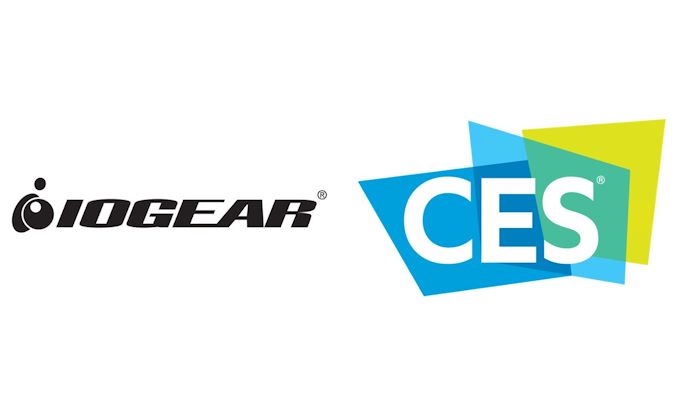
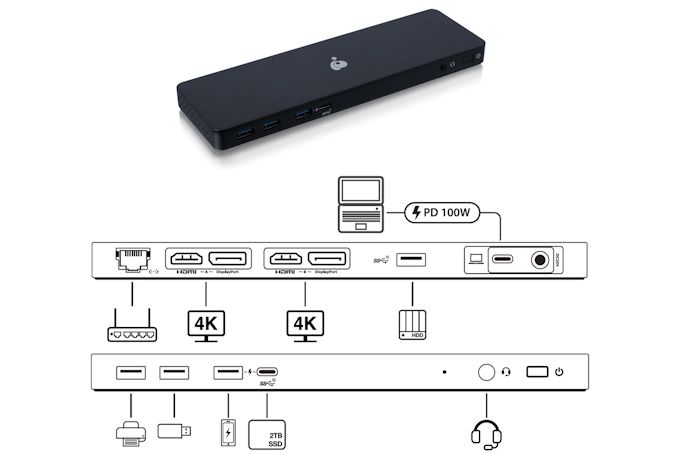

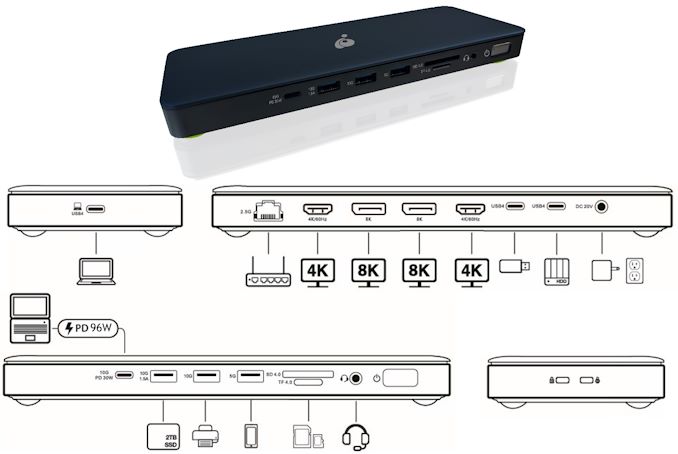
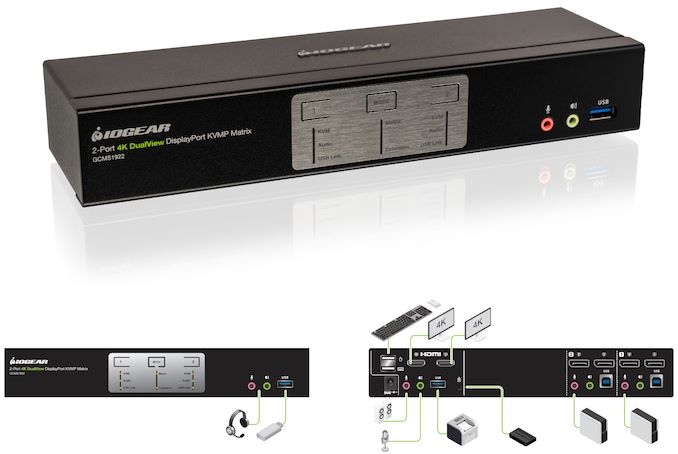

 Quote
Quote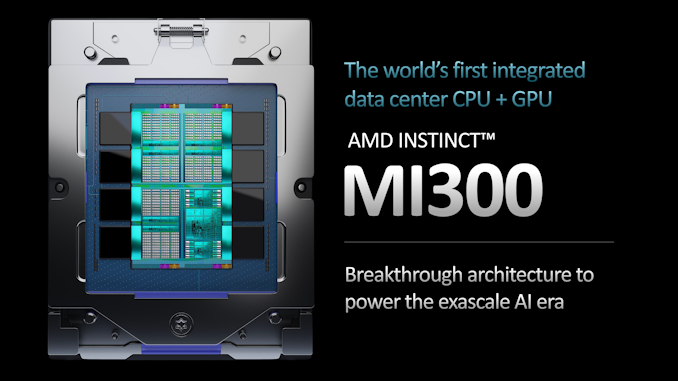
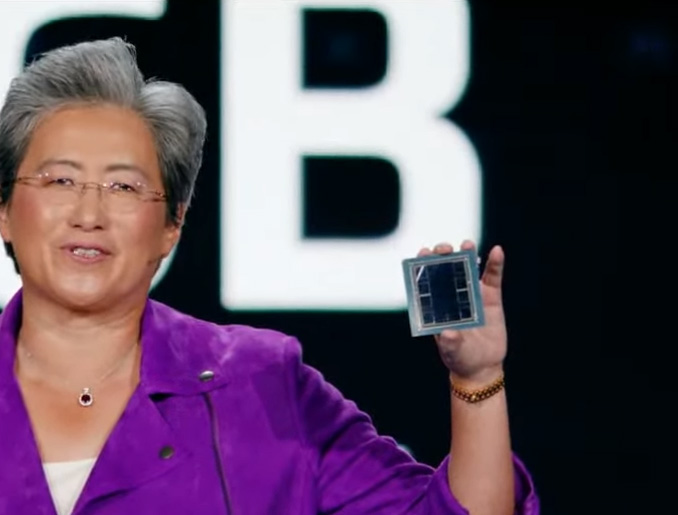
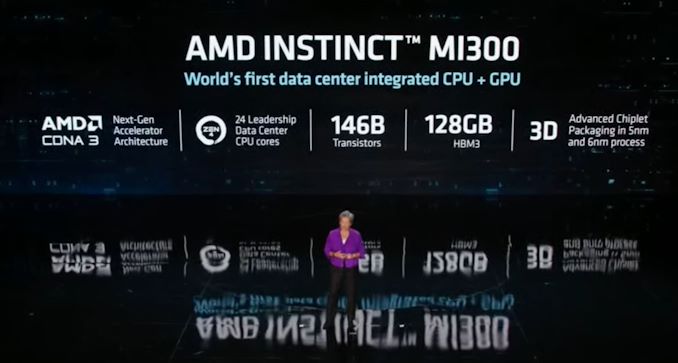
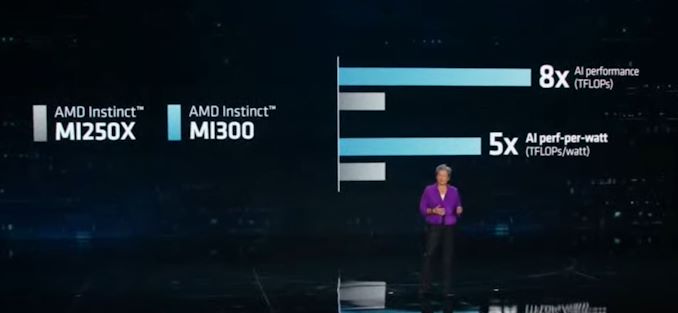
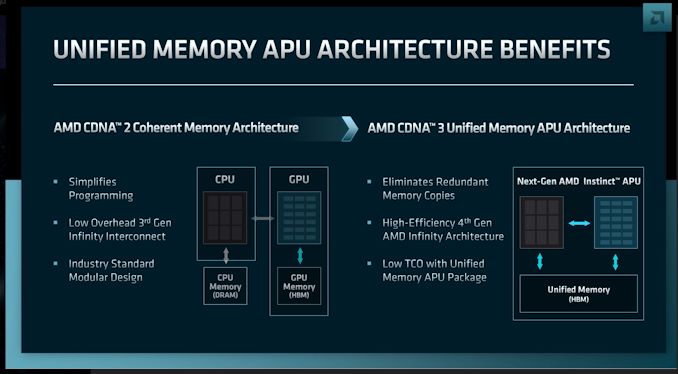






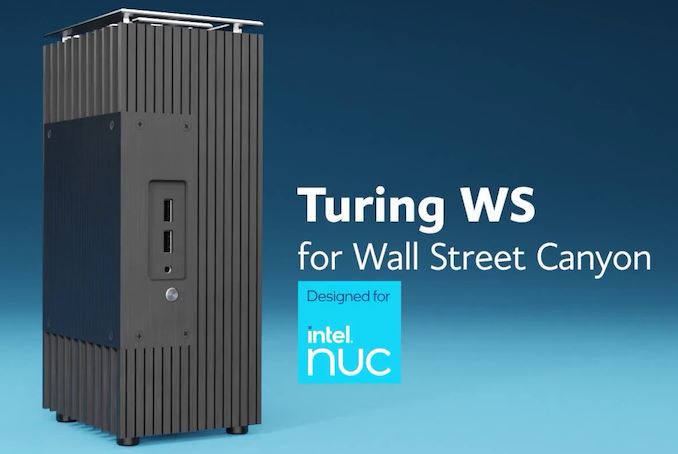


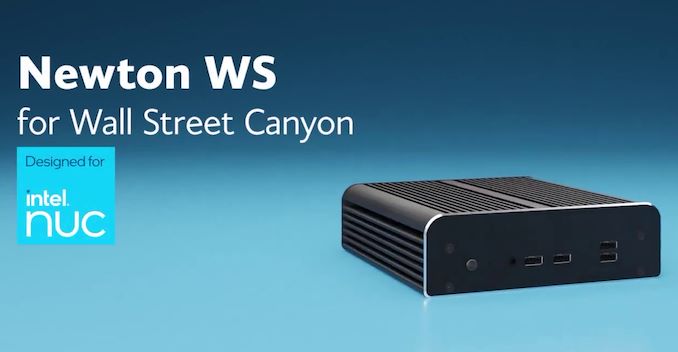
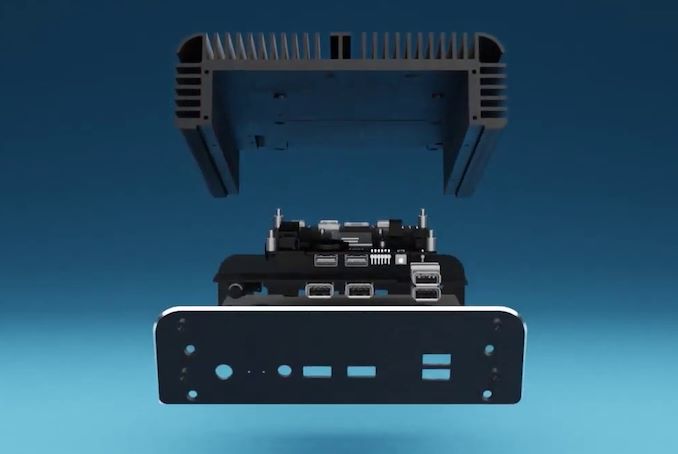
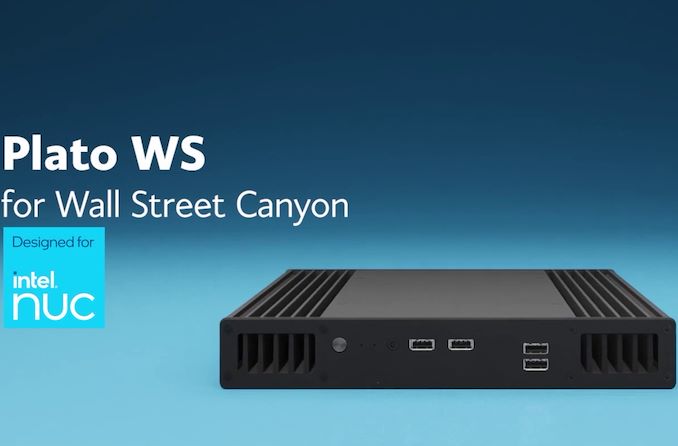
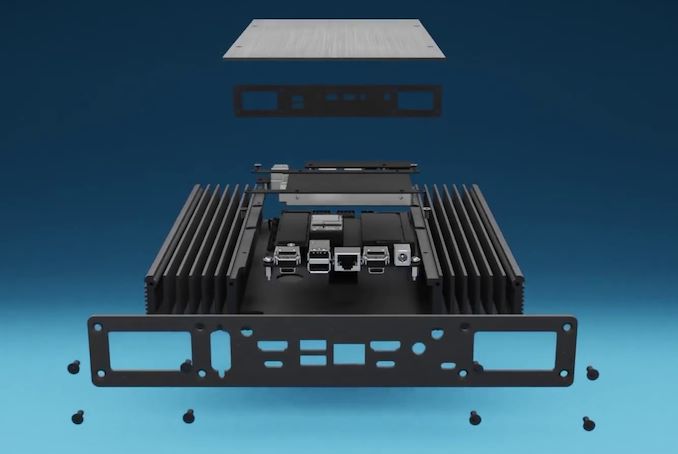
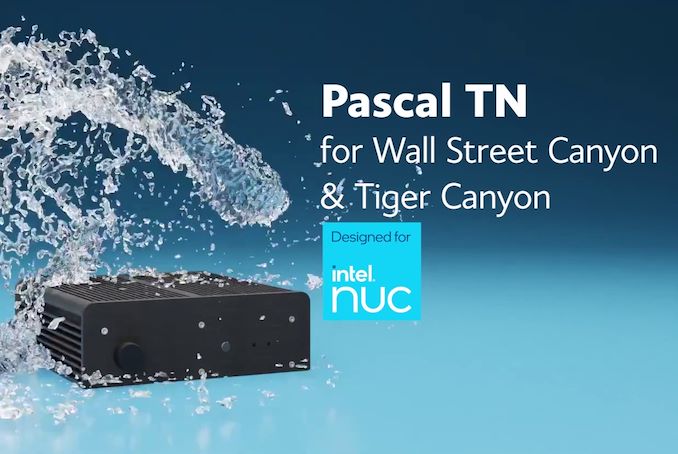

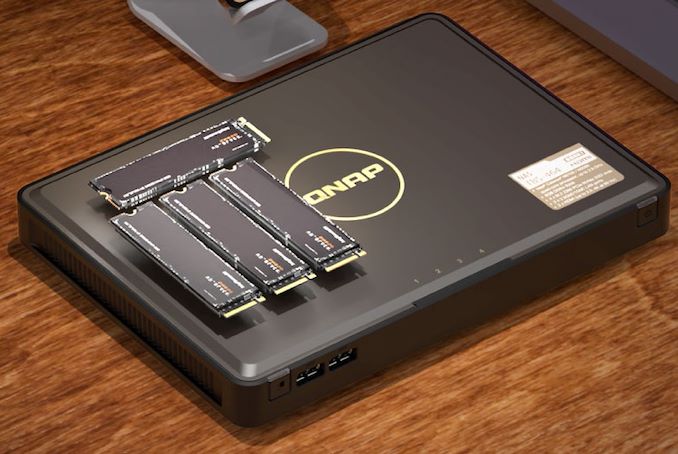
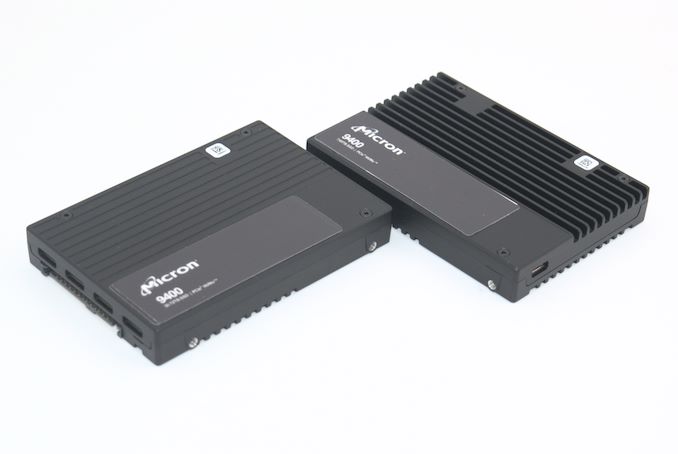
















Bookmarks